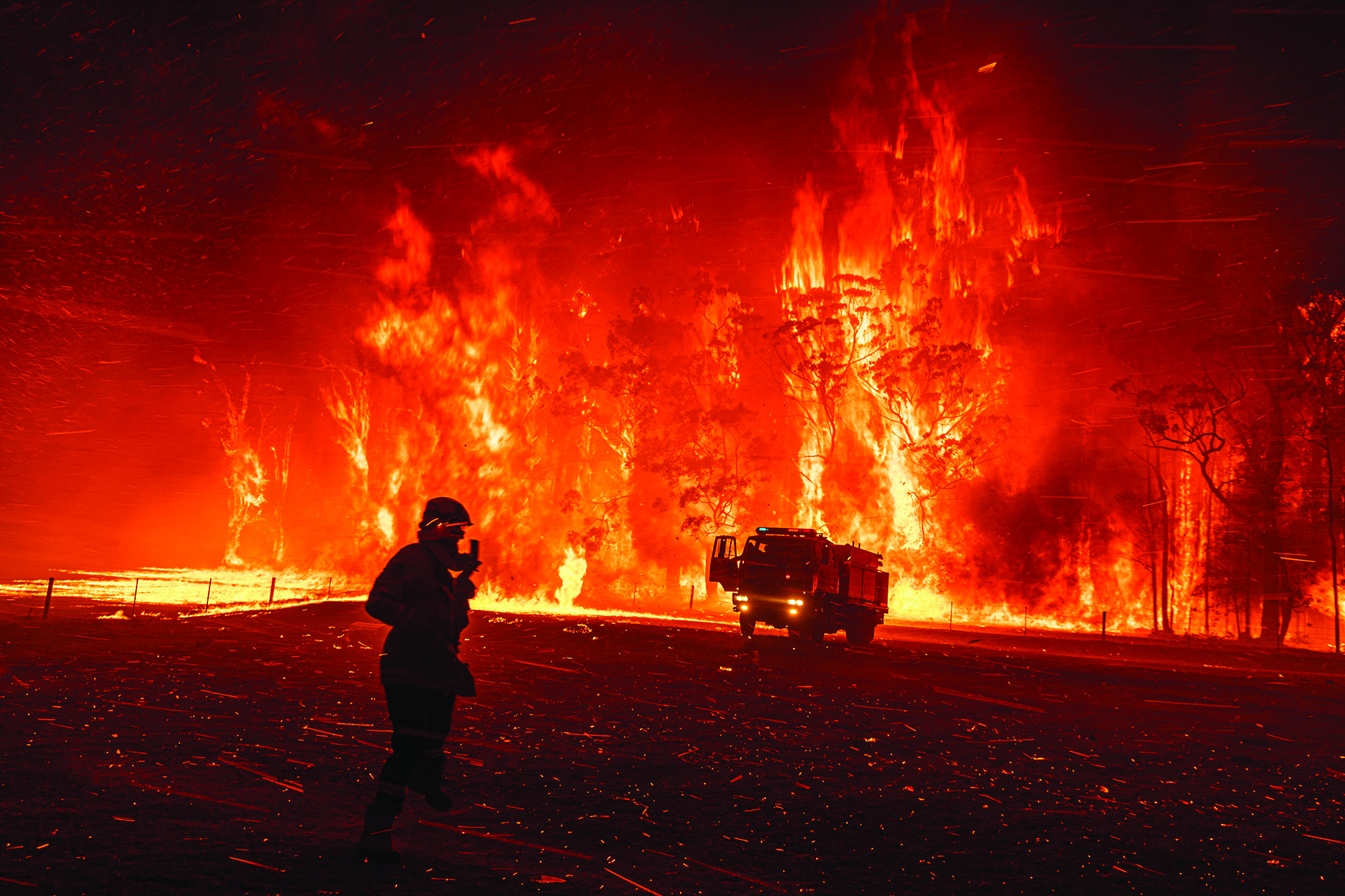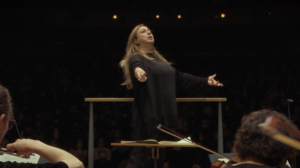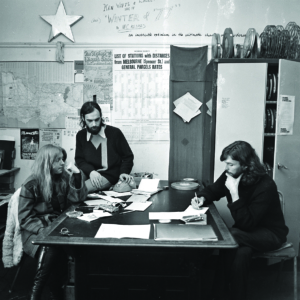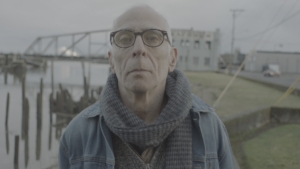Eddie Martin is one of Australia’s most interesting filmmakers – be it working in documentary or otherwise. His works of non-fiction evoke tapestries of individual lives, told with (often colourful) broad strokes; they push emotional connections to the forefront while embracing a cinematic polish that separates him from many other documentarians. Martin’s work has felt expansive and big; his All This Mayhem (2014) and Have You Seen the Listers? (2017)[1]See Anthony Carew, ‘High Price Tag: Art and Absolution in Have You Seen the Listers?’, Metro, no. 196, 2018, pp. 82–7, available at <https://metromagazine.com.au/high-price-tag/>, accessed 22 November 2022. are both documentaries about Australian personages that use a significant amount of home-video footage to crack apart their subjects as if performing open-heart surgery. His films’ adroit editing – a quality evident in his feature-length debut, Lionel (2008), which documents the life of Gunditjmara boxing legend Lionel Rose – makes a consistently strong case for Australians’ worthiness as subjects of big, glossy, entertaining biographies. And even his 2021 title We Were Once Kids[2]Also known as The Kids, the title under which the film was previously covered in Metro following its Australian premiere at the 2021 Sydney Film Festival. See Kath Dooley, ‘Open Wound: Excavating Exploitation in Eddie Martin’s The Kids’, Metro, no. 210, 2021, pp. 48–51, available at <https://metromagazine.com.au/open-wound/>, accessed 18 November 2022.– an outlier in his oeuvre given its focus on the effect of controversial US indie flick Kids (Larry Clark, 1995) on its young actors – shows that the director has one eye on local history and another on craft, story and big ideas.
All of this makes Fire Front (2022) a surprising development in Martin’s career. This time, he has no single protagonist, no defining human subject. Instead, he has turned his gaze to a larger tragedy: Australia’s devastating 2019–2020 bushfire season, referred to colloquially as Black Summer.[3]See Richard Wood, ‘Australian Bushfires One Year On: How Black Summer of Death and Destruction Erupted’, 9News, 13 November 2020, <https://www.9news.com.au/national/australian-bushfires-black-summer-one-year-anniversary/4b61f48a-9b80-44b8-8f35-a57249f924ab>, accessed 18 November 2022. Beginning his research in March 2020, not long after the bushfires had abated and just before the beginning of the country’s COVID-19 lockdowns,[4]Carver Films, Fire Front press kit, p. 2. Martin has said he was ‘motivated and inspired to create an ambitious documentary’ with an intention to ‘honour the individuals who were so heavily impacted and fought so hard against these unparalleled events’.[5]Eddie Martin, ‘Director’s Statement’, in ibid., p. 4. I’d say he has succeeded.

Just two years on from its peak, the fire season that engulfed some 14 million hectares of land has already proven to be a mighty inspiration for a number of Australian creatives. Burning (Eva Orner, 2021) garnered international attention for its particularly heavy focus on climate change;[6]See Stephen A Russell, ‘Up in Smoke: Eva Orner on Burning and the Failure of Australian Climate Policy’, Metro, no. 211, 2022, pp. 36–41, available at <https://metromagazine.com.au/up-in-smoke/>, accessed 18 November 2022. while A Fire Inside (Justin Krook, 2021) and the Four Corners special ‘Black Summer’ (2020) followed similar narrative lines by taking us inside the wall of flames via the testimony of those who fought them. There was even a dramatic retelling: the 2021 ABC miniseries Fires, which boasted an impressive and award-winning cast.
Martin’s film is probably the strongest of the lot, chronologically detailing this momentous environmental phenomenon and the media storm that came out of it with clear and honest eyes. Whereas All This Mayhem and Have You Seen the Listers? made minor use of non-archival material, Fire Front is constructed exclusively from previously produced footage. For reasons I cannot explain, this is an approach to non-fiction filmmaking that typically seems to be more popular abroad, with prominent overseas practitioners including Sergei Loznitsa and Kirsten Johnson; The Final Quarter (Ian Darling, 2019) is a rare recent – albeit less effective – example of an Australian documentary that has adopted the style Martin employs here.[7]See Travis Johnson, ‘A Race to the Goal: Adam Goodes’ Story in The Final Quarter and The Australian Dream’, Metro, no. 203, 2020, pp. 76–83, available at <https://metromagazine.com.au/a-race-to-the-goal/>, accessed 22 November 2022.
Fire Front is rewarding, but also, for ninety-two minutes, unrelenting: it’s a film that never lets the viewer forget the hellscape that so many people found themselves in as volunteer firefighters, terrified home owners or unlucky holiday-makers.
For Fire Front, Martin and editor Johanna Scott amassed a trove of TV and radio content, security footage, and body-cam recordings, as well as private home movies and mobile phone videos recorded throughout the months-long ordeal. This makes for a film that is emotionally bruising and exhausting to watch. It’s rewarding, but also, for ninety-two minutes, unrelenting: it’s a film that never lets the viewer forget the hellscape that so many people found themselves in as volunteer firefighters, terrified home owners or unlucky holiday-makers. An opening disclaimer warning viewers about the disturbing nature of much of the footage – particularly for those who have already lived through it – is rightly earned.
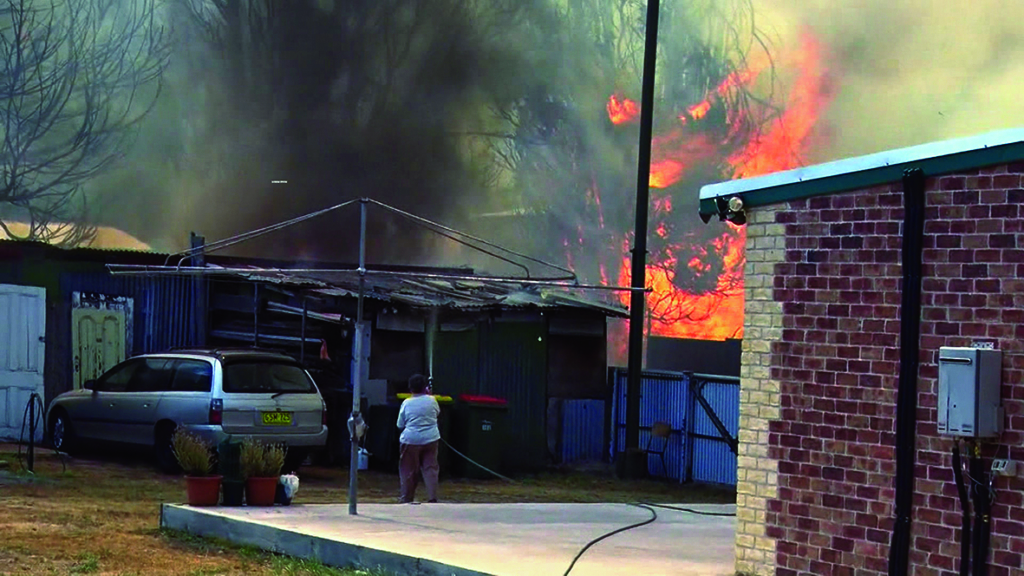
While many of us may think back on the Black Summer period as one of daily dangers, in which checking air-quality ratings was vital and wearing masks wasn’t yet pandemic-politicised, it certainly didn’t start that way. Smoke may have filled the lungs of even those who lived far away from the front lines in Australia’s inner cities, and celebrities may have spoken out about the disaster on televised award shows (most notably, Russell Crowe, Cate Blanchett, Pierce Brosnan and Ellen DeGeneres at the 2020 Golden Globe Awards[8]See Rosie Perper, ‘Celebrities Used the Golden Globe Awards as a Platform to Push for Climate Change Reform and Bring Attention to Australian Bushfires’, Insider, 6 January 2020, <https://www.insider.com/celebrities-draw-attention-to-australian-bushfires-at-golden-globes-2020-1>, accessed 18 November 2022.), but Black Summer began almost like any other fire season. There was a crucial handicap, however, as Fire Front reminds us right off the bat: 2019 was Australia’s hottest and driest year ever documented,[9]See Alice Klein, ‘2019 Was Australia’s Hottest and Driest Year on Record’, New Scientist, 8 January 2020, <https://www.newscientist.com/article/2019-2019-was-australias-hottest-and-driest-year-on-record/>, accessed 18 November 2022. with records already being broken in the early months of the year, well before the fires hit.[10]See Michael McGowan, ‘March Was Australia’s Hottest on Record, with Temperatures 2C Above Average’, The Guardian, 2 April 2019, <https://www.theguardian.com/australia-news/2019/apr/02/march-was-australias-hottest-on-record-with-temperatures-2c-above-average>, accessed 18 November 2022. These were figures that carried the weight of bushfire expectations but were nevertheless too often brushed aside[11]See ‘An Electoral Brush Fire in Australia’, The New York Times, 20 May 2019, <https://www.nytimes.com/2019/05/20/opinion/australia-election-climate-change.html>, accessed 18 November 2022. by a federal government coming off an election win that was, accurately or otherwise, deemed a ‘miracle’[12]See ‘2019 Australia Election: Morrison Celebrates “Miracle” Win’, BBC News, 18 May 2019, <https://www.bbc.com/news/world-australia-48305001>, accessed 18 November 2022. – and, more importantly, a mandate for the winning side to continue its determination to leave climate change to others to address.[13]See Matt McDonald, ‘Election 2019: What Happened to the Climate Change Vote We Heard About?’, ABC News, 20 May 2019, <https://www.abc.net.au/news/2019-05-20/what-happened-to-the-climate-change-vote/11128128>, accessed 18 November 2022.
As the season got more and more intense, with fires popping up in unexpected locations and smoke beginning to billow across the country and over the Pacific Ocean, a much bigger and more alarming picture began to take shape: international news covered the story; tragic human loss was reported, as was an unfolding mammoth environmental and ecological disaster; images recalling the post-apocalyptic cinema that Australia was once known for[14]See Glenn Dunks, ‘Post-apocalypse Now: Australia as Cinema’s Dystopia’, Metro, no. 184, Autumn 2015, pp. 90–5. spread almost as fast as those of animal rescues. By its end, 3000 homes had been destroyed, thirty-three people had died (with a further 445 deaths attributed to smoke inhalation[15]Georgia Hitch, ‘Bushfire Royal Commission Hears That Black Summer Smoke Killed Nearly 450 People’, ABC News, 26 May 2020, <https://www.abc.net.au/news/2020-05-26/bushfire-royal-commission-hearings-smoke-killed-445-people/12286094>, accessed 18 November 2022.) and nearly 3 billion animals had perished or been displaced.[16]‘About Three Billion Animals Harmed in Australian Bushfires, WWF Says’, Reuters, 28 July 2020, <https://www.reuters.com/article/us-australia-bushfires-animal-deaths-idUSKCN24T14X>, accessed 18 November 2022. It is estimated that, from November 2019 through to January 2020, some 715 million tonnes of carbon dioxide were emitted into the atmosphere by the fires.[17]Smriti Mallapaty, ‘Australian Bush Fires Belched Out Immense Quantity of Carbon’, Nature, 15 September 2021, <https://www.nature.com/articles/d41586-021-02509-3>, accessed 18 November 2022.
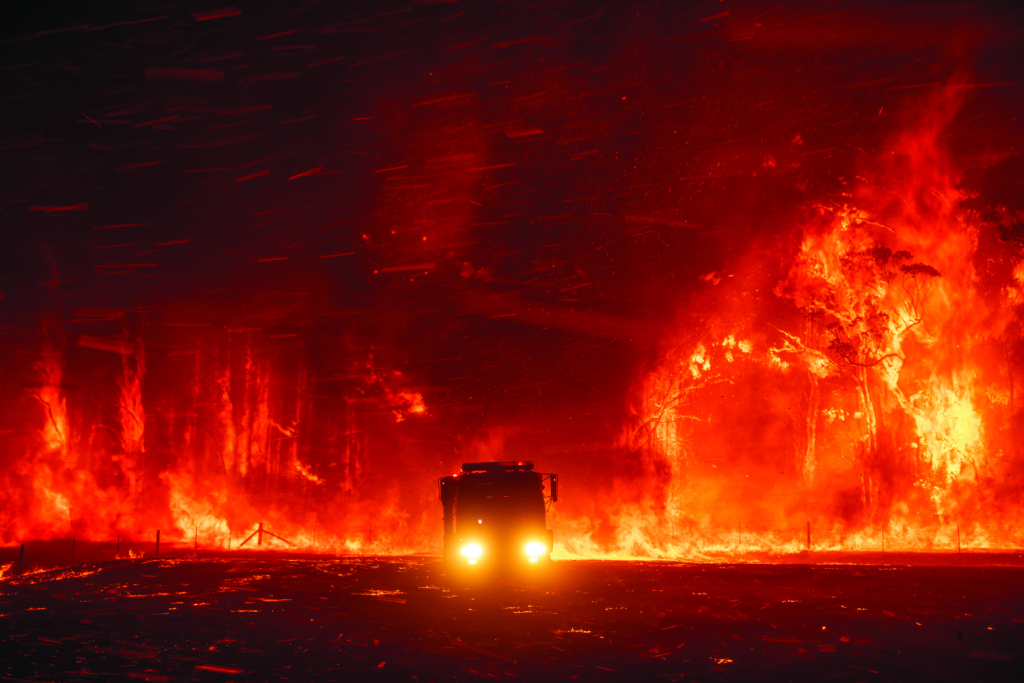
All of this information is smartly corralled by Martin and Scott. Audio reports are often paired with vision from one of their many sources: voiceover from a PBS NewsHour segment soundtracks images of a Channel 9 news reporter filing from a burnt-out paddock, while audio from the BBC plays alongside Queensland Police Service video of a rescue operation. This device provides an effective method of skirting around some potentially overplayed documentary techniques (such as talking-head interviews) while still benefiting from their inherent purpose. It also shows that, no matter how many times one may have seen a video or heard a report on the news or social media, there are always new contexts within which to consume them – to say nothing of the previously unseen material presented in the documentary, much of which still has the capacity to shock.
As Fire Front goes on, a fuller picture of the tragedy emerges. I would hesitate to call the film definitive, considering we do not (and will never) know everything about what occurred over the course of these events, but it nonetheless succeeds in bringing so much of the footage that played over that summer – the koala rescue,[18]See ‘“Lewis” the Koala Rescued from NSW Bushfire Dies Due to Extensive Burns’, The Guardian, 27 November 2019, <https://www.theguardian.com/australia-news/2019/nov/26/koala-rescued-from-nsw-bushfire-dies-due-to-extensive-burns>, accessed 22 November 2022. the Mallacoota beach scenes,[19]See ‘Mallacoota: Where Australia’s Bushfires Turned Day to Night’, BBC News, 31 December 2019, <https://www.bbc.com/news/world-australia-50953591>, accessed 22 November 2022. the firefighters forced to shelter inside their own truck[20]See Luke Cooper, ‘Australia Bushfires: NSW Firefighters Forced to Shield in Truck from Wall of Flame Near Nowra’, 9News, 1 January 2020, <https://www.9news.com.au/national/australia-bushfires-nsw-firefighters-shield-inside-truck-emergency-nowra-news/7b6f0a4f-aa61-4a12-b745-45c25c4d99c1>, accessed 22 November 2022. – and setting it within a timeline that conveys the full, dread-inducing scope of the fires. In the process, the documentary is effectively pulling off a bandaid to reveal the scar beneath. To recover, Fire Front seems to be suggesting, we must first truly engage with the horror that these bushfires wrought.

Amid this archival material, the subtle question that Martin appears to be posing is why these fires happened. Without getting into the intricacies of the policy history that led to the climate crisis – which, at any rate, goes back much too far for a documentary project like this to cover – he does a stellar job of weaving his clearly fervent views on the matter throughout. The way Fire Front has been constructed means that its politics can emerge more organically than it otherwise would, which is imperative to the film’s success as a work of modest activism. I would like to think a climate sceptic might find it harder to resist the sheer brute force of the images here than to dismiss the kinds of scientists and activists who so often appear in documentaries preaching to an audience that doesn’t need evangelising.
Unlike corresponding films from other countries like Rebuilding Paradise (Ron Howard, 2020), which focuses on the community of a California town hit by devastating wildfires, Fire Front quite deliberately pins a significant portion of its narrative thrust on climate change and lays the blame squarely at the feet of the politicians who have ignored the issue. Amid its flurry of pulse-elevating sequences of home escapes, car rescues, close calls and desperate pleas for nature’s mercy, the film finds time to incorporate many of the strange political faux pas (if one were to describe them generously) that emerged on the nation’s cycle of morning and evening news programs. These include, of course, former prime minister Scott Morrison’s now infamous ‘I don’t hold a hose, mate’ retort[21]See Stephanie Dalzell, ‘Prime Minister Scott Morrison Acknowledges Saying “I Don’t Hold a Hose, Mate” Wasn’t Helpful in ACA Interview with Tracy Grimshaw’, ABC News, updated 18 May 2022, <https://www.abc.net.au/news/2022-05-17/scott-morrison-questioned-over-record-on-a-current-affair/101075364>, accessed 21 November 2022. and the would-be political photo-ops that so awkwardly fell flat,[22]See ‘Scott Morrison Heckled After He Tries to Shake Hands with Bushfire Victim in NSW Town of Cobargo’, The Guardian, 2 January 2020, <https://www.theguardian.com/australia-news/2020/jan/02/scott-morrison-abused-by-bushfire-victims-in-nsw-town-of-cobargo>, accessed 21 November 2022. as well as footage of former deputy prime minister Michael McCormack finding time to chastise ‘woke capital-city greenies’.[23]See Matt Holden, ‘I’d Like a Raving Inner-city Lunatic T-shirt for Christmas, Please’, The Sydney Morning Herald, 12 November 2019, <https://www.smh.com.au/politics/federal/i-d-like-a-raving-inner-city-lunatic-t-shirt-for-christmas-please-20191112-p539tg.html>, accessed 21 November 2022. Space is also given to clips that audiences may have forgotten, such as the surreal moment in which New South Wales police told a thirteen-year-old girl that she would be arrested if she didn’t leave a protest outside Morrison’s residence.[24]See Tom Livingstone, ‘Young Girl Bravely Stands Up to Police at Kirribilli Protest’, 9News, 20 December 2019, <https://www.9news.com.au/national/young-girl-bravely-stands-up-to-police-at-kirribilli-protest/dc098d9b-ffe1-4f1e-9191-81d713de9130>, accessed 21 November 2022.
This isn’t new territory, of course; the Australian film industry produces many documentaries about climate change and the activism surrounding it. Alongside Fire Front and Burning, a number of films on the subject have been released in local cinemas over the last twelve months, including Franklin (Kasimir Burgess, 2022), River (Jennifer Peedom, 2021) and Greenhouse by Joost (Bruce Permezel & Rhian Skirving, 2022), with Bob Brown portrait The Giants (Rachel Antony & Laurence Billiet, 2022) and Philippines-shot international co-production Delikado (Karl Malakunas, 2022) forthcoming at the time of writing. These titles join a list of other recent environmentally focused Australian documentaries such as 2040 (Damon Gameau, 2019), The Weather Diaries (Kathy Drayton, 2020) and Wild Things (Sally Ingleton, 2020). While all of these filmmakers are clearly passionate about bringing national attention to the climate emergency, I would suggest that some of the documentaries are more effective than others. In the case of Fire Front, its greater success lies in not just the fact that Martin invests his audience so deeply into the narrative, but that he does so while offering us a feat of filmmaking that feels as big as its subject demands.

Fire Front’s subject matter is, nonetheless, a substantial pivot from the space that its director typically works in; and, as a result, he stumbles in a few places. For instance, David Hirschfelder’s original musical compositions are allowed to intrude in places where a more sombre, reflective tone would have been more appropriate – an unsubtle and frustrating approach that doesn’t suit the film’s highly emotive, heartbreaking material. I was also surprised to see – via clips from international news broadcasts – at least two graphics that have since been dismissed as misleading[25]For some examples of these widely shared graphics, see Peta Fuller, ‘The Truth Behind the “Misleading” Fire Maps That Have Gone Viral During Australia’s Bushfire Crisis’, ABC News,8 January 2020, <https://www.abc.net.au/news/2020-01-08/misleading-fire-maps-go-viral-during-australian-bushfire-crisis/11850948>, accessed 18 November 2022. appearing on screen without acknowledgement, a puzzling inclusion in a film that is otherwise so well put together.
These missteps are easy to forgive, however. Quietly celebrating the ordinary people who got on with the job while painting a far less flattering picture of those in power, Fire Front never resorts to manufactured emotion. Instead, the film demonstrates how frayed and dispirited the nation was at this time – something that similar productions about these events haven’t quite been able to achieve, having elected to focus on the experience of the fires rather than the political, social and all-too-literal ecosystem that they tore through.
Endnotes
| 1 | See Anthony Carew, ‘High Price Tag: Art and Absolution in Have You Seen the Listers?’, Metro, no. 196, 2018, pp. 82–7, available at <https://metromagazine.com.au/high-price-tag/>, accessed 22 November 2022. |
|---|---|
| 2 | Also known as The Kids, the title under which the film was previously covered in Metro following its Australian premiere at the 2021 Sydney Film Festival. See Kath Dooley, ‘Open Wound: Excavating Exploitation in Eddie Martin’s The Kids’, Metro, no. 210, 2021, pp. 48–51, available at <https://metromagazine.com.au/open-wound/>, accessed 18 November 2022. |
| 3 | See Richard Wood, ‘Australian Bushfires One Year On: How Black Summer of Death and Destruction Erupted’, 9News, 13 November 2020, <https://www.9news.com.au/national/australian-bushfires-black-summer-one-year-anniversary/4b61f48a-9b80-44b8-8f35-a57249f924ab>, accessed 18 November 2022. |
| 4 | Carver Films, Fire Front press kit, p. 2. |
| 5 | Eddie Martin, ‘Director’s Statement’, in ibid., p. 4. |
| 6 | See Stephen A Russell, ‘Up in Smoke: Eva Orner on Burning and the Failure of Australian Climate Policy’, Metro, no. 211, 2022, pp. 36–41, available at <https://metromagazine.com.au/up-in-smoke/>, accessed 18 November 2022. |
| 7 | See Travis Johnson, ‘A Race to the Goal: Adam Goodes’ Story in The Final Quarter and The Australian Dream’, Metro, no. 203, 2020, pp. 76–83, available at <https://metromagazine.com.au/a-race-to-the-goal/>, accessed 22 November 2022. |
| 8 | See Rosie Perper, ‘Celebrities Used the Golden Globe Awards as a Platform to Push for Climate Change Reform and Bring Attention to Australian Bushfires’, Insider, 6 January 2020, <https://www.insider.com/celebrities-draw-attention-to-australian-bushfires-at-golden-globes-2020-1>, accessed 18 November 2022. |
| 9 | See Alice Klein, ‘2019 Was Australia’s Hottest and Driest Year on Record’, New Scientist, 8 January 2020, <https://www.newscientist.com/article/2019-2019-was-australias-hottest-and-driest-year-on-record/>, accessed 18 November 2022. |
| 10 | See Michael McGowan, ‘March Was Australia’s Hottest on Record, with Temperatures 2C Above Average’, The Guardian, 2 April 2019, <https://www.theguardian.com/australia-news/2019/apr/02/march-was-australias-hottest-on-record-with-temperatures-2c-above-average>, accessed 18 November 2022. |
| 11 | See ‘An Electoral Brush Fire in Australia’, The New York Times, 20 May 2019, <https://www.nytimes.com/2019/05/20/opinion/australia-election-climate-change.html>, accessed 18 November 2022. |
| 12 | See ‘2019 Australia Election: Morrison Celebrates “Miracle” Win’, BBC News, 18 May 2019, <https://www.bbc.com/news/world-australia-48305001>, accessed 18 November 2022. |
| 13 | See Matt McDonald, ‘Election 2019: What Happened to the Climate Change Vote We Heard About?’, ABC News, 20 May 2019, <https://www.abc.net.au/news/2019-05-20/what-happened-to-the-climate-change-vote/11128128>, accessed 18 November 2022. |
| 14 | See Glenn Dunks, ‘Post-apocalypse Now: Australia as Cinema’s Dystopia’, Metro, no. 184, Autumn 2015, pp. 90–5. |
| 15 | Georgia Hitch, ‘Bushfire Royal Commission Hears That Black Summer Smoke Killed Nearly 450 People’, ABC News, 26 May 2020, <https://www.abc.net.au/news/2020-05-26/bushfire-royal-commission-hearings-smoke-killed-445-people/12286094>, accessed 18 November 2022. |
| 16 | ‘About Three Billion Animals Harmed in Australian Bushfires, WWF Says’, Reuters, 28 July 2020, <https://www.reuters.com/article/us-australia-bushfires-animal-deaths-idUSKCN24T14X>, accessed 18 November 2022. |
| 17 | Smriti Mallapaty, ‘Australian Bush Fires Belched Out Immense Quantity of Carbon’, Nature, 15 September 2021, <https://www.nature.com/articles/d41586-021-02509-3>, accessed 18 November 2022. |
| 18 | See ‘“Lewis” the Koala Rescued from NSW Bushfire Dies Due to Extensive Burns’, The Guardian, 27 November 2019, <https://www.theguardian.com/australia-news/2019/nov/26/koala-rescued-from-nsw-bushfire-dies-due-to-extensive-burns>, accessed 22 November 2022. |
| 19 | See ‘Mallacoota: Where Australia’s Bushfires Turned Day to Night’, BBC News, 31 December 2019, <https://www.bbc.com/news/world-australia-50953591>, accessed 22 November 2022. |
| 20 | See Luke Cooper, ‘Australia Bushfires: NSW Firefighters Forced to Shield in Truck from Wall of Flame Near Nowra’, 9News, 1 January 2020, <https://www.9news.com.au/national/australia-bushfires-nsw-firefighters-shield-inside-truck-emergency-nowra-news/7b6f0a4f-aa61-4a12-b745-45c25c4d99c1>, accessed 22 November 2022. |
| 21 | See Stephanie Dalzell, ‘Prime Minister Scott Morrison Acknowledges Saying “I Don’t Hold a Hose, Mate” Wasn’t Helpful in ACA Interview with Tracy Grimshaw’, ABC News, updated 18 May 2022, <https://www.abc.net.au/news/2022-05-17/scott-morrison-questioned-over-record-on-a-current-affair/101075364>, accessed 21 November 2022. |
| 22 | See ‘Scott Morrison Heckled After He Tries to Shake Hands with Bushfire Victim in NSW Town of Cobargo’, The Guardian, 2 January 2020, <https://www.theguardian.com/australia-news/2020/jan/02/scott-morrison-abused-by-bushfire-victims-in-nsw-town-of-cobargo>, accessed 21 November 2022. |
| 23 | See Matt Holden, ‘I’d Like a Raving Inner-city Lunatic T-shirt for Christmas, Please’, The Sydney Morning Herald, 12 November 2019, <https://www.smh.com.au/politics/federal/i-d-like-a-raving-inner-city-lunatic-t-shirt-for-christmas-please-20191112-p539tg.html>, accessed 21 November 2022. |
| 24 | See Tom Livingstone, ‘Young Girl Bravely Stands Up to Police at Kirribilli Protest’, 9News, 20 December 2019, <https://www.9news.com.au/national/young-girl-bravely-stands-up-to-police-at-kirribilli-protest/dc098d9b-ffe1-4f1e-9191-81d713de9130>, accessed 21 November 2022. |
| 25 | For some examples of these widely shared graphics, see Peta Fuller, ‘The Truth Behind the “Misleading” Fire Maps That Have Gone Viral During Australia’s Bushfire Crisis’, ABC News,8 January 2020, <https://www.abc.net.au/news/2020-01-08/misleading-fire-maps-go-viral-during-australian-bushfire-crisis/11850948>, accessed 18 November 2022. |
